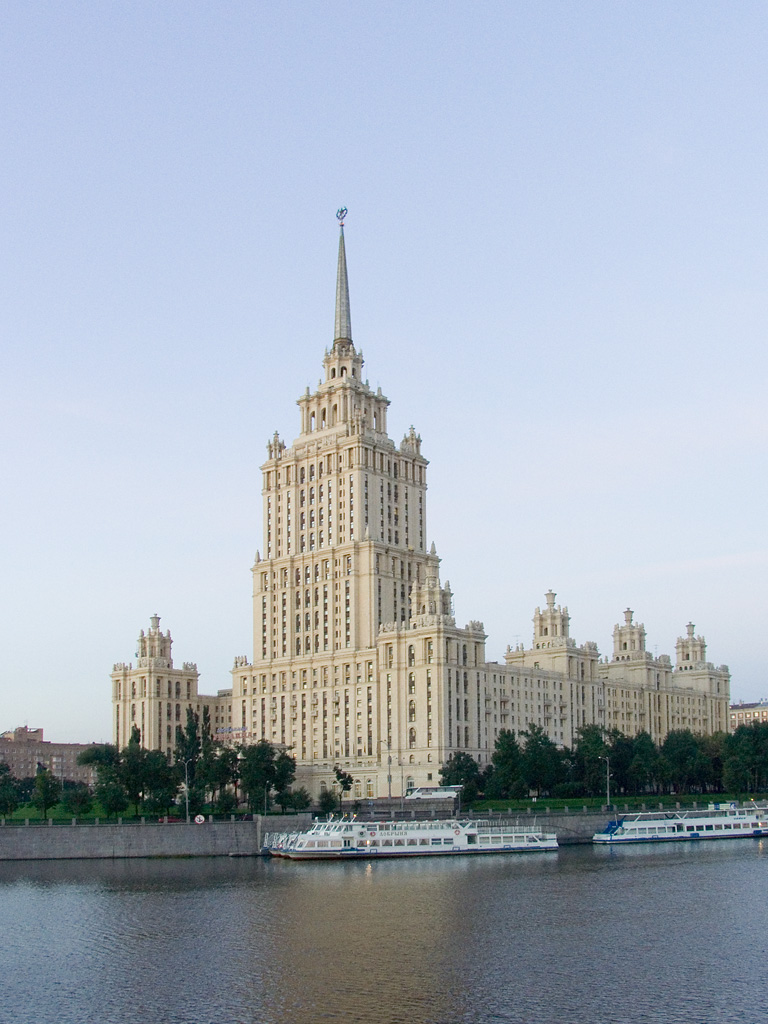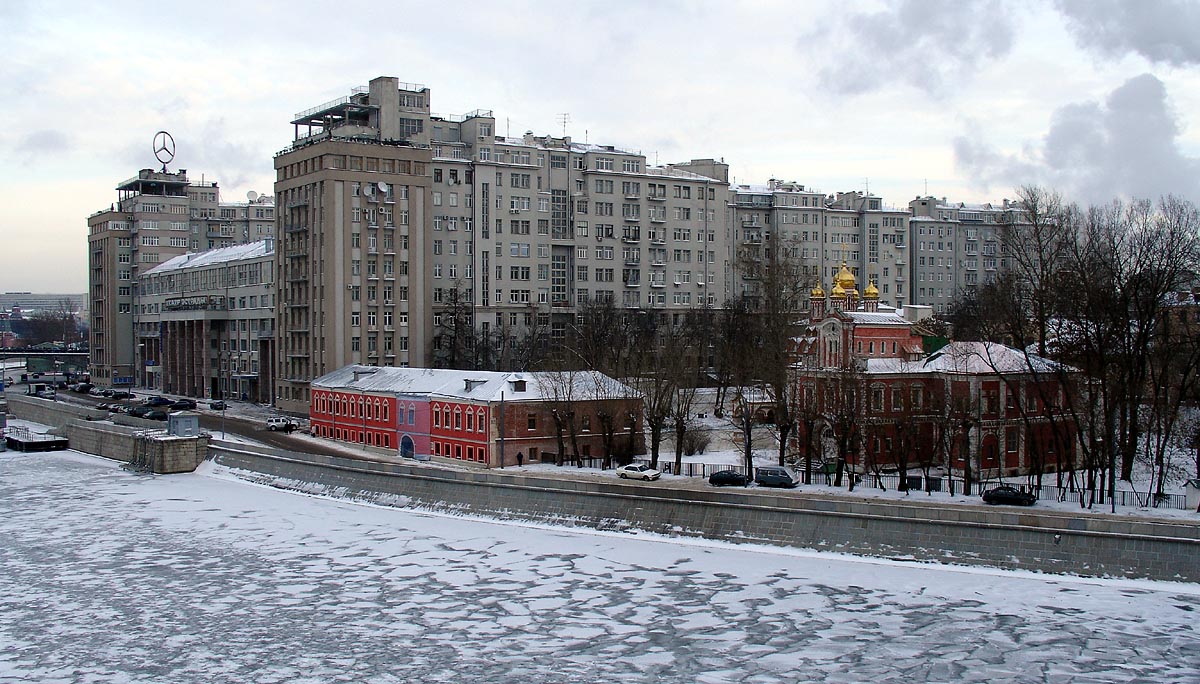|
Nikolai Suetin
Nikolai Suetin (; 25 October 189722 January 1954) was a Russian Suprematist artist. He worked as a graphic artist, a designer, and a ceramics painter. Suetin studied at the Vitebsk Higher Institute of Art, (1918–1922) under Kazimir Malevich, founder of Suprematism, an early abstract art movement which developed a style based on 'non objective' geometric shapes in alignment. From 1920 the artist participated in exhibitions including those of the UNOVIS group (Vitebsk, 1920 and 1921; Moscow 1929, 1921 and 1922), Petrograd exhibitions, an International Exhibition of Decorative Art (held in Paris, 1925), the Exhibition of Soviet Porcelain (1926 and 1927), and the First Exhibition of Leningrad artists in the Russian Museum among others. He lived in Petrograd from 1923, and worked at the State Lomonosov Ceramics Factory. He also worked at the State Petrograd Lomonossov Porcelain Plant (from 1922 until 1924), and at the Porcelain Plant in Government of Novgorod (from 1924 until 1925). ... [...More Info...] [...Related Items...] OR: [Wikipedia] [Google] [Baidu] |
Suprematist
Suprematism () is an early 20th-century art movement focused on the fundamentals of geometry (circles, squares, rectangles), painted in a limited range of colors. The term ''suprematism'' refers to an abstract art based upon "the supremacy of pure artistic feeling" rather than on the figurative depiction of real-life subjects. Founded by Russian artist Kazimir Malevich in 1913, Supremus () conceived of the artist as liberated from everything that predetermined the ideal structure of life and art. Projecting that vision onto Cubism, which Malevich admired for its ability to deconstruct art, and in the process change its reference points of art, he led a group of Russian avant-garde artists—including Aleksandra Ekster, Liubov Popova, Olga Rozanova, Ivan Kliun, Ivan Puni, Nadezhda Udaltsova, Nina Genke-Meller, Ksenia Boguslavskaya and others—in what has been described as the first attempt to independently found a Russian avant-garde movement, seceding from the traject ... [...More Info...] [...Related Items...] OR: [Wikipedia] [Google] [Baidu] |
USSR
The Union of Soviet Socialist Republics. (USSR), commonly known as the Soviet Union, was a List of former transcontinental countries#Since 1700, transcontinental country that spanned much of Eurasia from 1922 until Dissolution of the Soviet Union, it dissolved in 1991. During its existence, it was the list of countries and dependencies by area, largest country by area, extending across Time in Russia, eleven time zones and sharing Geography of the Soviet Union#Borders and neighbors, borders with twelve countries, and the List of countries and dependencies by population, third-most populous country. An overall successor to the Russian Empire, it was nominally organized as a federal union of Republics of the Soviet Union, national republics, the largest and most populous of which was the Russian SFSR. In practice, Government of the Soviet Union, its government and Economy of the Soviet Union, economy were Soviet-type economic planning, highly centralized. As a one-party state go ... [...More Info...] [...Related Items...] OR: [Wikipedia] [Google] [Baidu] |
1954 Deaths
Events January * January 3 – The Italian broadcaster RAI officially begins transmitting. * January 7 – Georgetown–IBM experiment: The first public demonstration of a machine translation system is held in New York, at the head office of IBM. * January 10 – BOAC Flight 781, a de Havilland Comet jet plane, disintegrates in mid-air due to metal fatigue, and crashes in the Mediterranean near Elba; all 35 people on board are killed. * January 12 – 1954 Blons avalanches, Avalanches in Austria kill more than 200. * January 15 – Mau Mau rebellion, Mau Mau leader Waruhiu Itote is captured in Kenya. * January 17 – In Socialist Federal Republic of Yugoslavia, Yugoslavia, Milovan Đilas, one of the leading members of the League of Communists of Yugoslavia, is relieved of his duties. * January 20 – The US-based National Negro Network is established, with 46 member radio stations. * January 21 – The first nuclear-powered submarine, the , is ... [...More Info...] [...Related Items...] OR: [Wikipedia] [Google] [Baidu] |
1897 Births
Events January * January 2 – The International Alpha Omicron Pi sorority is founded, in New York City. * January 4 – A British force is ambushed by Chief Ologbosere, son-in-law of the ruler. This leads to a punitive expedition against Benin. * January 7 – A cyclone destroys Darwin, Australia. * January 8 – Lady Flora Shaw, future wife of Governor General Lord Lugard, officially proposes the name "Nigeria" in a newspaper contest, to be given to the British Niger Coast Protectorate. * January 22 – In this date's issue of the journal ''Engineering'', the word ''computer'' is first used to refer to a mechanical calculation device. * January 31 – The Czechoslovak Trade Union Association is founded in Prague. February * February 10 – Freedom of religion is proclaimed in Madagascar. * February 16 – The French conquer the island of Raiatea and capture the rebel chief Teraupo'o, ending the Leeward Islands War and brin ... [...More Info...] [...Related Items...] OR: [Wikipedia] [Google] [Baidu] |
Russian Avant-garde
The Russian avant-garde was a large, influential wave of avant-garde modern art that flourished in the Russian Empire and the Soviet Union, approximately from 1890 to 1930—although some have placed its beginning as early as 1850 and its end as late as 1960. The term covers many separate, but inextricably related, art movements that flourished at the time; including Suprematism, Constructivism (art), Constructivism, Russian Futurism, Cubo-Futurism, Zaum, Imaginism, and Neo-primitivism. In Ukraine, many of the artists who were born, grew up or were active in what is now Belarus and Ukraine (including Kazimir Malevich, Aleksandra Ekster, Vladimir Tatlin, David Burliuk, Alexander Archipenko), are also classified in the Ukrainian avant-garde. The Russian avant-garde reached its creative and popular height in the period between the Russian Revolution of 1917 and 1932, at which point the ideas of the avant-garde clashed with the newly emerged state-sponsored direction of Socialis ... [...More Info...] [...Related Items...] OR: [Wikipedia] [Google] [Baidu] |
1939 New York World's Fair
The 1939 New York World's Fair (also known as the 1939–1940 New York World's Fair) was an world's fair, international exposition at Flushing Meadows–Corona Park in Queens, New York City, New York, United States. The fair included exhibitions, activities, performances, films, art, and food presented by 62 nations, 35 U.S. states and territories, and 1,400 organizations and companies. Slightly more than 45 million people attended over two seasons. It was based on "the world of tomorrow", with an opening slogan of "Dawn of a New Day". The fairground consisted of seven color-coded zones, as well as two standalone focal exhibits. The fairground had about 1939 New York World's Fair pavilions and attractions, 375 buildings. Plans for the 1939 World's Fair were first announced in September 1935, and the New York World's Fair Corporation (WFC) began constructing the fairground in June 1936. The fair opened on April 30, 1939, coinciding with the 150th anniversary of the first i ... [...More Info...] [...Related Items...] OR: [Wikipedia] [Google] [Baidu] |
Stalinist Architecture
Stalinist architecture (), mostly known in the former Eastern Bloc as Stalinist style or socialist classicism, is the architecture of the Soviet Union under the leadership of Joseph Stalin, between 1933 (when Boris Iofan's draft for the Palace of the Soviets was officially approved) and 1955 (when Nikita Khrushchev condemned "excesses" of the past decades and disbanded the Soviet Academy of Architecture). Stalinist architecture is associated with the Socialist realism school of art and architecture. Features As part of the Soviet policy of rationalization of the country, all cities were built to a general urban planning, development plan. Each was divided into districts, with allotments based on the city's geography. Projects would be designed for whole districts, visibly transforming a city's architectural image. The interaction of the state with the architects would prove to be one of the features of this time. The same building could be declared a Formalism (art), formalist b ... [...More Info...] [...Related Items...] OR: [Wikipedia] [Google] [Baidu] |
Boris Iofan
Boris Mikhailovich Iofan (, ; April 28, 1891 – March 11, 1976) was a Soviet architect of Jewish origin, known for his Stalinist architecture buildings like the 1931 House on the Embankment and the 1931–1933 winning draft of the Palace of the Soviets. Background Born in Odessa, Iofan graduated in 1916 from Italy's ''Regio Istituto Superiore di Belle Arti'' (now '' Accademia di Belle Arti'') in Rome with a degree in architecture, initially following the Neoclassical tradition. His first major work was a Barvikha sanatorium for the Party elite (1929), which introduced him to clients at the top of the state. In 1931, Iofan completed the elite block-wide ''House on the Embankment'' (official name Дом Правительства, ''Government Building''). The structure, containing 505 apartments, two theaters and retail stores, became an iconic example of early Stalinism. Boris Iofan was a lifelong resident of this building. Palace of Soviets Iofan's entry to the Pal ... [...More Info...] [...Related Items...] OR: [Wikipedia] [Google] [Baidu] |
1937 Paris Exhibition
The ''Exposition Internationale des Arts et Techniques dans la Vie Moderne'' (International Exposition of Art and Technology in Modern Life) was held from 25 May to 25 November 1937 in Paris, France. Both the Palais de Chaillot, housing the Musée de l'Homme, and the Palais de Tokyo, which houses the Musée d'Art Moderne de la Ville de Paris, were created for this exhibition that was officially sanctioned by the Bureau International des Expositions. A third building, , housing the permanent Museum of Public Works, which was originally to be among the new museums created on the hill of Chaillot on the occasion of the Exhibition, was not built until January 1937 and inaugurated in March 1939. Exhibitions At first the centerpiece of the exposition was to be a tower (" Phare du Monde") which was to have a spiraling road to a parking garage located at the top and a hotel and restaurant located above that. The idea was abandoned as it was far too expensive. Pavilions Finnish Pav ... [...More Info...] [...Related Items...] OR: [Wikipedia] [Google] [Baidu] |
Benezit Dictionary Of Artists
The ''Benezit Dictionary of Artists'' (in French, ''Bénézit: Dictionnaire des peintres, sculpteurs, dessinateurs et graveurs'') is an extensive publication of bibliographical information on painters, sculptors, designers and engravers created primarily for art museums, auction houses, historians and dealers. It was published by Éditions Gründ in Paris but has been sold to Oxford University Press. First published in the French language in three volumes between 1911 and 1923, the dictionary was put together by Emmanuel Bénézit (1854–1920) and a team of international specialists with assistance from his son the painter Emmanuel-Charles Bénézit (1887–1975), and daughter Marguerite Bénézit. After the elder Bénézit's death the editors were (1895–1994) and the painter (1922–2004), the younger Bénézit having already left Paris and moved to Provence. The next edition was an eight-volume set published between 1948 and 1955, followed by a ten-volume set in 1976 ... [...More Info...] [...Related Items...] OR: [Wikipedia] [Google] [Baidu] |
Novgorod
Veliky Novgorod ( ; , ; ), also known simply as Novgorod (), is the largest city and administrative centre of Novgorod Oblast, Russia. It is one of the oldest cities in Russia, being first mentioned in the 9th century. The city lies along the Volkhov River just downstream from its outflow from Lake Ilmen and is situated on the M10 highway (Russia), M10 federal highway connecting Moscow and Saint Petersburg. UNESCO recognized Novgorod as a World Heritage Site in 1992. The city has a population of At its peak during the 14th century, the city was the capital of the Novgorod Republic and was one of Europe's largest cities. The "Великий" part was added to the city's name in 1999. Climate Veliky Novgorod has a humid continental climate (Köppen climate classification, Köppen ''Dfb''). The city has warm summers with temperatures reaching over 30 °C (86 °F) and relatively cold winters with frequent snowfall. The lowest air temperature ever recorded is -45 °C ( ... [...More Info...] [...Related Items...] OR: [Wikipedia] [Google] [Baidu] |






